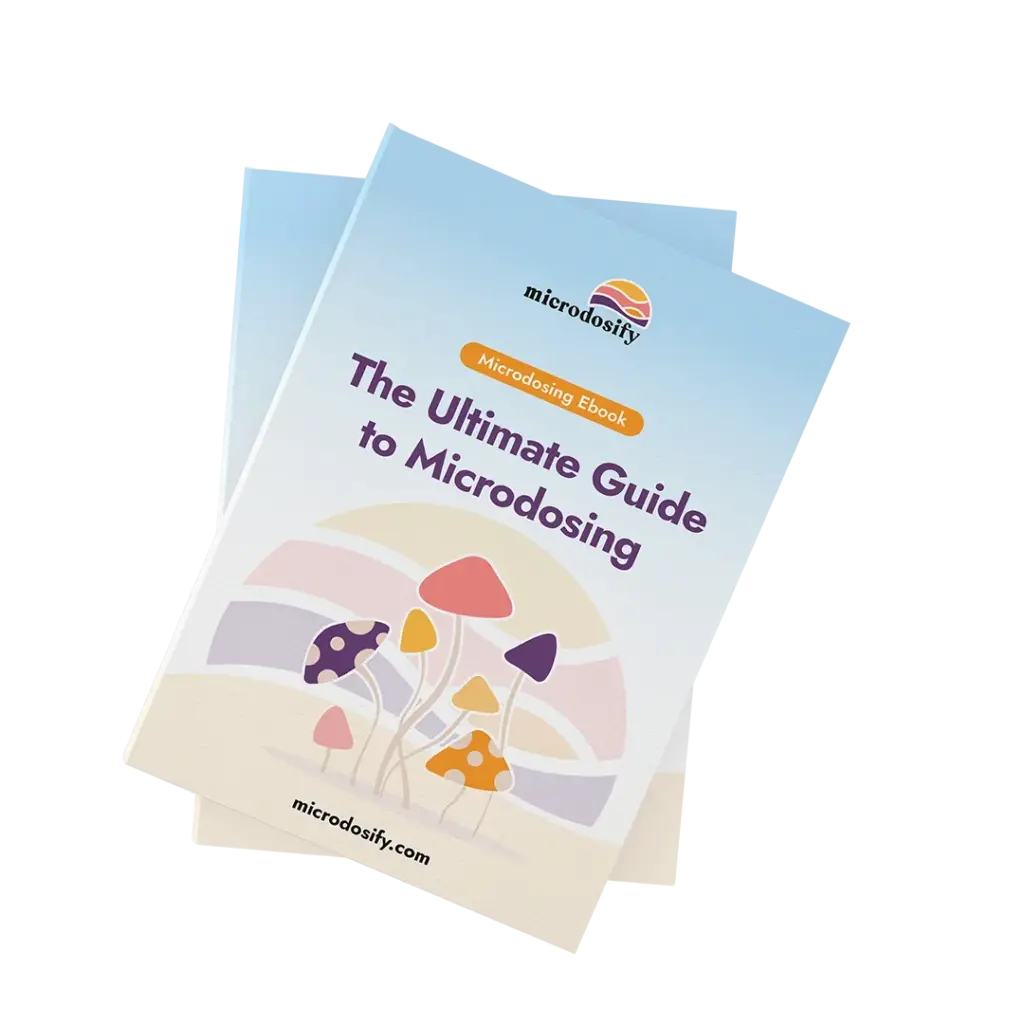This article explores mushroom stacking, detailing how it’s done, the various methods involved, and the types of mushrooms that work best together.
It also discusses the potential health advantages, from improved nutrition to increased medicinal properties, along with any possible side effects.
By the end, you’ll discover delicious ways to incorporate these stacked mushrooms into your daily life.
Key Takeaways:
- Mushroom stacking combines different types of mushrooms to enhance nutritional benefits, medicinal properties, flavor, and digestibility.
- Potential side effects of mushroom stacking include allergic reactions, digestive issues, and interactions with medications.
- Popular mushroom stacking combinations include shiitake and oyster mushrooms, lion’s mane and reishi mushrooms, and portobello and cremini mushrooms.
What Is Mushroom Stacking?

Mushroom stacking is a holistic health practice that combines various types of medicinal mushrooms to enhance their individual and synergistic health benefits.
Rooted in ancient wisdom and traditional medicine, this practice has gained popularity in modern herbalism and among advocates of functional fungi.
Renowned mycologist Paul Stamets and other herbalists emphasize the importance of mushroom stacking for improving cognitive function, immune system response, and overall personal health, making it a topic of interest for those exploring dietary supplements and natural health solutions.
How Is Mushroom Stacking Done?
Mushroom stacking is typically done by combining different mushroom varieties in either powdered form or concentrated extracts, aiming to maximize the health benefits derived from each type.
This method, often used in dietary supplements, highlights the synergy between functional fungi like Chaga, Reishi, and Lion’s Mane.
These fungi are known for their immune-enhancing properties and rich nutrient profiles, including beta-glucans and Ergothioneine.
What Types of Mushrooms Can Be Stacked?
There is a wide array of medicinal mushrooms that can be effectively stacked for enhanced health benefits, each offering unique properties and nutrients.
Popular varieties include Chaga, known for its antioxidant properties, Lion’s Mane which supports cognitive function, and Reishi, widely recognized for its immune-boosting effects.
Other mushrooms, such as Turkey Tail, Maitake, Shiitake, and Cordyceps, also contribute to the overall synergistic effect when combined.
When exploring the various health benefits associated with stacking these fungi, people can uncover an abundance of wellness benefits.
The combination of medicinal mushrooms maximizes individual effects, leading to holistic health improvements.
For instance, Turkey Tail contains Polysaccharopeptides that bolster gut health, while Maitake helps regulate blood sugar levels, providing crucial support for metabolic functions.
- Chaga: Rich in antioxidants, helps reduce inflammation and combat oxidative stress.
- Lion’s Mane: Promotes nerve growth factor production, contributing to brain health and memory.
- Reishi: Facilitates better sleep and reduces anxiety levels through its calming properties.
What Are the Different Methods of Mushroom Stacking?
Mushroom stacking can be accomplished through several methods, including the use of mushroom extracts or powders, each providing varying degrees of potency and bioavailability.
Some individuals may opt for microdosing, integrating small amounts of different functional mushrooms into their daily routines, while others may prefer creating blended formulas that incorporate adaptogenic herbs for additional health benefits.
These mushroom stacking techniques allow for tailored approaches depending on personal health goals and lifestyle preferences.
- Mushroom Extracts: Often available in liquid form, extracts tend to offer higher concentrations of active compounds, leading to faster effects, yet they may come with higher costs.
- Mushroom Powders: Easy to incorporate into food or beverages, powders provide a more gradual release of nutrients, making them suitable for those looking for sustained benefits over time.
- Microdosing: This technique can enhance overall wellness and mental clarity while minimizing the risks associated with higher dosages.
- Blended Formulas: Combining mushrooms with adaptogenic herbs can amplify effects, creating synergistic benefits that support stress management and immune function.
Preparation of mushroom powders and extracts usually involves drying and grinding the mushrooms or using specialized extraction methods to isolate beneficial compounds.
This process ensures that each stack is effective, no matter the method chosen.
What Are the Benefits of Mushroom Stacking?
Mushroom stacking offers a multitude of health benefits supported by ancient wisdom and modern research, making it an appealing option for those seeking to enhance their well-being.
By combining various medicinal mushrooms, individuals can experience improved immune system function, heightened cognitive function, and increased intake of essential nutrients and antioxidants.
This holistic approach aligns well with contemporary interests in natural supplements and adaptogens, presenting a compelling case for integrating mushroom stacking into personal health regimes.
Enhanced Nutritional Benefits
One of the primary benefits of mushroom stacking is the enhanced nutritional profile it provides, as combining different medicinal mushrooms can lead to a rich source of essential nutrients and antioxidants.
Each type of mushroom brings its unique set of vitamins, minerals, and bioactive compounds, which collectively contribute to a more robust dietary supplement that supports various aspects of health.
This synergistic effect boosts nutritional value and improves the bioavailability of these nutrients, allowing the body to absorb them more effectively.
For instance,
- Reishi mushrooms are known for their high levels of polysaccharides and triterpenes, which are powerful compounds that support immune function and promote relaxation.
- Shiitake mushrooms provide a rich source of B vitamins, particularly B5 and B6, along with selenium and zinc, essential for energy metabolism and antioxidant defense.
- Maitake mushrooms are celebrated for their beta-glucans, which help modulate immune response and may aid in blood sugar control.
When these mushrooms are combined in a supplement, users can enjoy a blend that not only enhances energy levels but also fortifies health against various ailments, showcasing the remarkable potential of mushroom stacking for overall wellness.
Increased Medicinal Properties
Stacking significantly amplifies mushrooms’ medicinal properties, allowing for a broader range of health benefits, including immune enhancement and potential support in cancer treatment.
Combining functional mushrooms harnesses the power of adaptogens, which can help the body adapt to stress and promote overall well-being.
By combining various species, such as Reishi, Shiitake, and Cordyceps, the synergistic effects are enhanced, leading to profound medicinal outcomes. Research has indicated that mushroom stacking can boost the immune system’s response, making the body more resilient against pathogens.
For instance, a study published in the Journal of Medicinal Food highlighted that individuals consuming a blend of these mushrooms showed increased levels of immune cells, which are crucial for fighting infections.
Preliminary research has suggested that certain stacked combinations may exhibit anti-cancer properties, as explored in a trial reported in Phytotherapy Research, showing that these mushrooms can inhibit tumor growth.
These findings demonstrate the potential of utilizing medicinal mushrooms not just individually, but in curated combinations that maximize their health benefits. To summarize, the approach of mushroom stacking is becoming increasingly popular for those seeking natural options for enhancing their health.
Improved Flavor and Texture
In addition to its health benefits, mushroom stacking can also improve the flavor and texture of various dishes, making it a popular choice in culinary applications.
By combining different mushroom varieties, cooks can create more complex flavors and appealing textures, transforming simple meals into gourmet experiences.
To fully harness mushroom stacking’s culinary potential, it’s essential to understand the diverse characteristics that each variety brings to the table.
For instance, earthy Shiitakes can add a rich umami base, while delicate Enokis introduce a light crunch that contrasts.
Incorporate meaty Portobellos as a centerpiece, providing hearty satisfaction, or add Porcini powder as a seasoning to elevate dishes with its concentrated flavor.
Consider these tips when incorporating mushroom varieties:
- Layering Flavor: Start with sautéing robust mushrooms and layer in milder varieties to create depth.
- Textures Matter: Combine starchy, chewy types like lion’s mane with tender oyster mushrooms to add variety.
- Recipes to Try: Blend assorted mushrooms into sauces, risottos, or stir-fries to elevate everyday meals.
By understanding the unique flavor profiles of different mushrooms, any cook can transform their culinary creations into delightful experiences.
Better Digestibility
Mushroom stacking has been shown to improve the digestibility of nutrients, making it easier for the body to absorb the beneficial compounds found in these functional fungi.
This enhanced digestibility can lead to better health outcomes, as the body can more effectively utilize the vitamins, minerals, and antioxidants present in the stacked mushrooms.
The process of mushroom stacking involves combining various mushroom species, each offering a unique array of nutrients and compounds that can work together synergistically.
Research indicates that some mushrooms enhance the absorption of certain minerals, while others are rich in dietary fibers, promoting gut health. For instance, varieties like lion’s mane and reishi are known to support cognitive function and immune health, respectively, thus contributing not just to nutrient uptake, but also overall well-being.
- Enhanced Nutrient Absorption: Specific mushrooms contain enzymes that break down complex nutrients, making them more bioavailable.
- Digestive Benefits: The fibers in mushrooms can nourish beneficial gut bacteria, promoting a balanced microbiome.
- Vitamins and Antioxidants: Varieties such as shiitake and maitake are particularly high in these essential nutrients, supporting various bodily functions.
Ultimately, embracing the concept of stacking different mushrooms can lead to a more effective and holistic approach to nutrition.
What Are the Potential Side Effects of Mushroom Stacking?
While mushroom stacking offers numerous health benefits, it is essential to be aware of potential side effects that may arise from this practice.
Some people may experience allergic reactions, digestive issues, or even interactions with medications when consuming certain mushroom varieties, particularly when taken in higher doses or combined with other supplements.
Allergic Reactions
Allergic reactions to mushrooms can occur in some individuals, which may manifest as skin rashes, gastrointestinal discomfort, or respiratory issues when stacking different types of mushrooms. These reactions can vary widely and may depend on individual sensitivities to specific mushroom varieties.
In many cases, the symptoms appear shortly after consumption, making it crucial for individuals to be vigilant about what they eat. Common symptoms include a range of issues such as:
- Skin Rashes: These may present as hives or eczema-like irritations, indicating an allergy.
- Gastrointestinal Discomfort: Symptoms like nausea, vomiting, or diarrhea often occur as the body attempts to reject the allergen.
- Respiratory Problems: Allergic reactions can also lead to difficulty breathing, nasal congestion, or wheezing.
People who experience these symptoms after mushroom consumption should take note of which varieties were consumed and consider keeping a food diary to help identify patterns.
It is essential for anyone experiencing severe symptoms or anaphylaxis to seek immediate medical attention.
The importance of consulting healthcare professionals cannot be overstated, as they can provide guidance on how to manage allergies effectively and may recommend tests to pinpoint specific triggers.
Digestive Issues
Some individuals may encounter digestive issues when engaging in mushroom stacking, such as gastrointestinal discomfort, bloating, or diarrhea, particularly if they are not accustomed to consuming high amounts of dietary fiber and other compounds found in mushrooms. These side effects can arise from an abrupt increase in mushroom intake.
To mitigate these adverse effects, it is essential to slowly incorporate mushrooms into one’s diet rather than consuming large quantities all at once.
A gradual introduction allows the digestive system to adjust to the increased fiber content and various polysaccharides present in different types of mushrooms.
Here are some helpful tips:
- Start with small servings of mushrooms, such as a few slices of shiitake or oyster mushrooms.
- Monitor your body’s response over several days to determine any sensitivities.
- Gradually increase portions as comfort levels allow, ensuring proper hydration to assist digestion.
- Experiment with various mushroom varieties to identify those that you tolerate best.
Following these steps can facilitate a smoother transition to integrating mushrooms into meals, promoting both enjoyment and digestive health.
Interactions with Medications
Mushroom stacking may pose potential interactions with certain medications, especially immunosuppressants or anticoagulants, which can affect health outcomes. It is crucial for people taking medications to consult with healthcare professionals before incorporating stacked mushrooms into their routine.
The complex nature of mushroom compounds can lead to unexpected reactions within the body, particularly when mixed with medications such as warfarin or cyclosporine.
For instance, certain mushroom varieties may enhance the effects of warfarin, increasing the risk of bleeding, while others could interfere with how immunosuppressants work, potentially compromising the effectiveness of the treatment.
The presence of various bioactive substances in mushrooms can impact liver enzymes, which play a critical role in drug metabolism. Thus, it’s not just about the health benefits of mushrooms; one must be vigilant about their possible interactions with existing prescriptions. To ensure a safe approach:
- Always disclose any mushroom supplements to healthcare providers.
- Keep communication open regarding all dietary changes.
- Monitor health closely when incorporating new supplements.
What Are Some Popular Mushroom Stacking Combinations?

There are several popular mushroom stacking combinations that many health enthusiasts and herbalists recommend for their synergistic benefits, including blends featuring Shiitake, Lion’s Mane, and Reishi mushrooms, among others. These combinations are often chosen for their complementary health effects, enhancing cognitive performance, immune support, and overall vitality.
Turkey Tail and Chaga Mushroom: Improves immunity
- Turkey Tail may help protect from infections.
- Chaga Mushrooms may strengthen the immune system due to its high antioxidant qualities.
Chaga and Reishi Mushroom: Improves the state of calmness
- Chaga is high in antioxidants and may help to decrease potential damage due to stress.
- Reishi mushroom is a shen tonic that soothes and nourishes the spirit.
Chaga and Cordyceps Mushroom: Boosts Energy
- Chaga mushroom enhances the uptake of glucose, maximizing energy pathways in the body.
- Cordyceps is thought to improve energy and the body’s ability to use oxygen efficiently.
Lion’s Mane and Reishi Mushroom: Improves Mental Focus and Cognition
- Lion’s Mane may improve memory and focus and reduce feelings of anxiety and irritability. Reishi can enhance cognitive and brain function and decrease fatigue.
Tremella and Reishi Mushroom: Improve Skin Health
- Tremella may help boost collagen and moisturize the skin.
- Reishi is known as the “fountain of youth” due to its purported ability to help reduce fine lines and wrinkles.
Turkey Tail and Lion’s Mane Mushroom: Improve Gut Health
- Turkey Tail functions as a prebiotic.
- Lion’s Mane may inhibit bad bacteria and combat inflammation in the gut.
Cordyceps and Reishi Mushroom: Strengthens and Protects Lungs
- Cordyceps benefits and protects the lungs.
- Reishi may improve oxygen utilization and, therefore, strengthen the lungs.
Chaga and Lion’s Mane Mushroom: Overall Mental and Physical Well-Being
- The main benefits of Chaga mushrooms include supporting healthy immune function, stress response, digestion, metabolism, and heart and skin health.
- Lion’s Mane is considered the ultimate brain- and mood-boosting cognitive mushroom. It can specifically aid memory, focus, productivity, and nerve cell growth.
How Can Mushroom Stacking Be Incorporated into a Diet?
Incorporating mushroom stacking into your diet can be accomplished through various culinary applications, allowing you to enjoy the health benefits of these functional mushrooms in delicious and practical ways. Whether through soups, salads, stir-fries, or smoothies, there are numerous creative options to seamlessly integrate stacked mushrooms into everyday meals.
In Soups and Stews
Using mushroom stacking in soups and stews is an excellent way to enhance both flavor and nutrition, as the mushrooms infuse the broth with their rich umami taste and health-promoting properties. Varieties like Shiitake and Reishi can elevate the dish, providing a comforting meal with added health benefits.
By incorporating a variety of mushrooms, one can create a complex flavor profile that not only pleases the palate but also offers an array of nutrients. For instance, pairing Shiitake mushrooms with cremini and oyster mushrooms can introduce a delightful interplay of textures and tastes. When preparing a soup, try sautéing the mushrooms in olive oil with garlic and onions before adding your broth; this method helps to deepen the flavors significantly.
- Recipe Idea: A hearty mushroom and barley soup can benefit from the addition of stacked mushrooms, providing a nourishing meal that’s both filling and rich in antioxidants.
- Tip: For stews, consider using dried mushrooms like porcini. Soak them in warm water prior to cooking; their soaking liquid can be added to the stew for an extra layer of flavor.
To maximize the health benefits, don’t discard the mushroom stems; they are flavorful and packed with nutrients. Incorporating these tips in your cooking will surely elevate ordinary meals to extraordinary experiences.
In Salads
Incorporating mushroom stacking into salads can create a fresh, vibrant dish that packs a nutritional punch, utilizing the distinct textures and flavors of different mushrooms. Fresh mushrooms like Oyster and Shiitake can be sliced and added raw or lightly sautéed to enhance the overall taste and health benefits.
Exploring a diverse selection of fungi can elevate a simple salad to an extraordinary culinary experience. For instance, adding portobello or cremini mushrooms introduces hearty and meaty flavors, which can beautifully contrast with the crispness of fresh greens.
To enhance the dish, consider incorporating a variety of complementary ingredients such as:
- Fresh herbs like parsley or dill for an aromatic touch
- Nuts or seeds, which provide a pleasant crunch
- Cheeses like feta or goat cheese for creaminess
Regarding dressings, a light vinaigrette with balsamic vinegar or a drizzle of lemon juice can brighten the mushrooms’ earthy tones. Exploring variations like a sesame-ginger dressing also adds a delightful twist!
The inclusion of various mushrooms not only enhances the flavor profile but also contributes to a well-rounded, nutritious dish.
In Stir-Fries
Stir-fries are an excellent way to incorporate mushroom stacking into meals, allowing for quick and versatile dishes that highlight the unique flavors and health benefits of different mushrooms. Varieties such as Lion’s Mane and Maitake can add delightful textures and taste to these vibrant, colorful meals.
When experimenting with mushroom stacking, consider using a combination of textures by pairing delicate enoki mushrooms with heartier shiitakes or portobellos. This creates a balanced dish that is not only visually appealing but also rich in flavor and nutrients. To successfully integrate various mushrooms, it’s best to:
- Begin with the mushrooms that take longer to cook, such as shiitake or portobello, allowing them to develop their robust flavors.
- Add more delicate varieties like enoki or oyster mushrooms towards the end to retain their texture and freshness.
- Incorporate a splash of soy sauce or sesame oil to enhance the umami profile of the dish.
For a quick weeknight dinner, try a simple stir-fry combining bok choy, bell peppers, and a medley of mushrooms, tossing everything together until just tender.
In Smoothies
Adding mushroom stacking to smoothies is a unique and effective way to enhance nutritional intake, offering a health boost without compromising flavor. Mushroom powders derived from varieties like Chaga and Lion’s Mane can blend seamlessly into smoothies, providing essential nutrients and antioxidants.
By incorporating these potent ingredients, individuals can create a nutrient-dense beverage that not only tastes great but also supports overall wellness. One could experiment with different combinations to find the most enjoyable flavors. For example, blending Chaga powder with banana and almond milk can yield a creamy and satisfying smoothie, while adding Lion’s Mane to a berry mix enhances cognitive function.
- Combine 1 tsp of Chaga powder with 1 cup of frozen blueberries, 1 banana, and 1 cup almond milk for a delicious treat.
- Try a Lion’s Mane blend with spinach, apple, and coconut water for a refreshing boost.
This way, anyone can enjoy the delightful fusion of health benefits and taste in every sip.
Frequently Asked Questions
What is mushroom stacking?
Mushroom stacking is a practice of combining different types of edible mushrooms in a specific way to enhance their health benefits and create a more flavorful dish.
What are the benefits of mushroom stacking?
Mushroom stacking allows for a variety of health benefits as different types of mushrooms have unique nutrients and properties. It can also enhance the flavor and texture of dishes, making them more enjoyable to eat.
What types of mushrooms can be used for stacking?
Any type of edible mushroom can be used for stacking, but popular choices include shiitake, oyster, portobello, and cremini mushrooms. It’s important to use mushrooms that are fresh and free from any spoilage.
How should mushrooms be stacked?
The most common way to stack mushrooms is by layering them on top of each other, starting with the largest and ending with the smallest. You can also stack mushrooms by slicing them into thin layers and alternating them with other ingredients, such as cheese or vegetables.
Are there any side effects of mushroom stacking?
While mushrooms are generally safe to eat, some people may experience digestive issues or allergic reactions to certain types of mushrooms. It’s always best to consult with a healthcare professional before trying new foods, especially if you have any underlying health conditions.
Can mushroom stacking be incorporated into any dish?
Yes, mushroom stacking can be incorporated into a variety of dishes, such as soups, stir-fries, pasta, and even sandwiches. It adds a unique and delicious twist to any meal and can be enjoyed by both vegetarians and meat-eaters.





